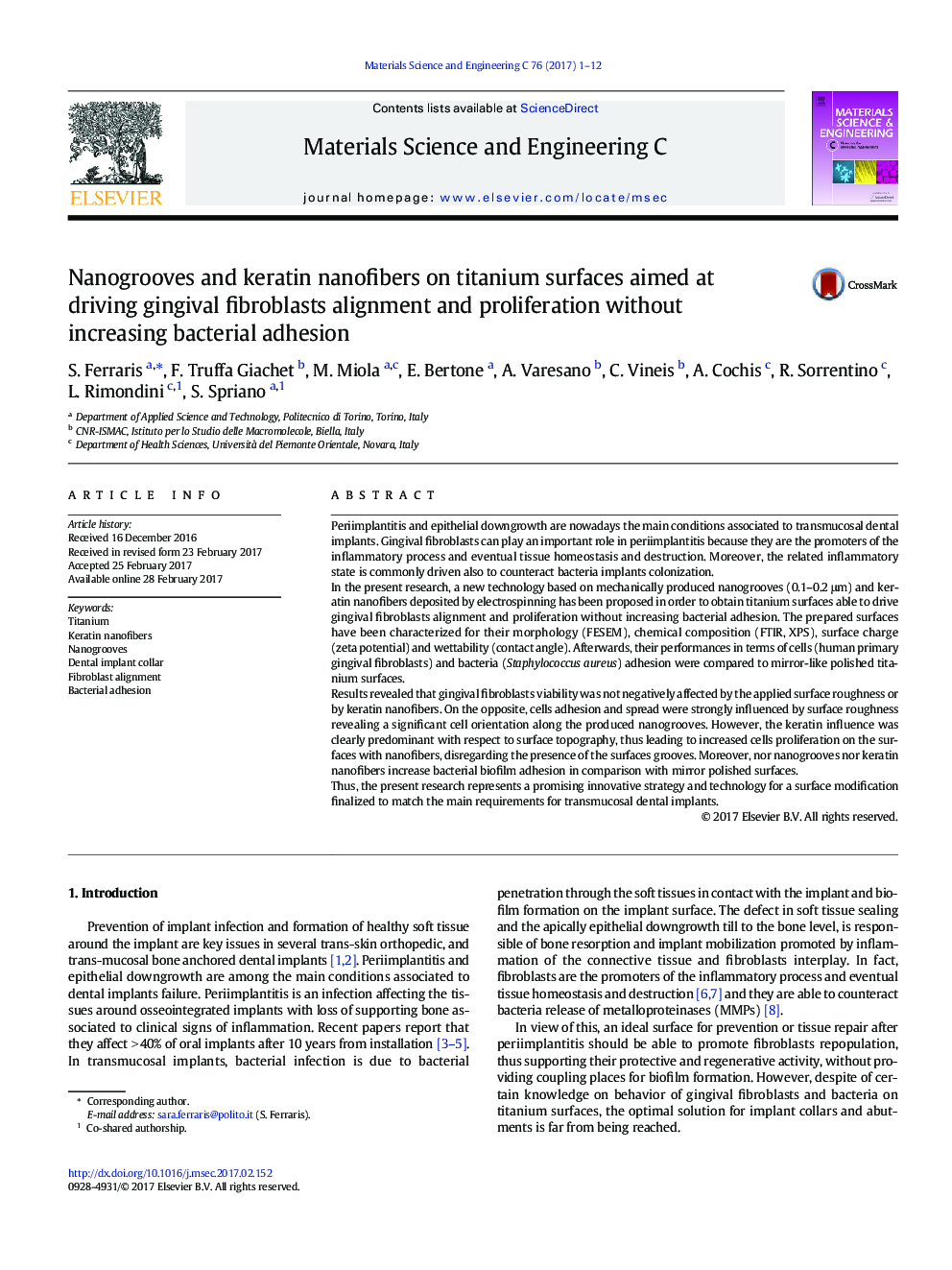| کد مقاله | کد نشریه | سال انتشار | مقاله انگلیسی | نسخه تمام متن |
|---|---|---|---|---|
| 5435086 | 1509145 | 2017 | 12 صفحه PDF | دانلود رایگان |
- Nanogrooves were obtained on commercially pure titanium through mechanical route.
- Keratin nanofibers were deposited on smooth and grooved substrates by electrospinning.
- Nanogrooves or nanofibers did not alter biocompatibility and bacterial adhesion.
- Nanogrooves were effective in driving early gingival fibroblasts orientation (48Â h).
- Keratin nanofibers significantly improved gingival fibroblasts adhesion/proliferation.
Periimplantitis and epithelial downgrowth are nowadays the main conditions associated to transmucosal dental implants. Gingival fibroblasts can play an important role in periimplantitis because they are the promoters of the inflammatory process and eventual tissue homeostasis and destruction. Moreover, the related inflammatory state is commonly driven also to counteract bacteria implants colonization.In the present research, a new technology based on mechanically produced nanogrooves (0.1-0.2 μm) and keratin nanofibers deposited by electrospinning has been proposed in order to obtain titanium surfaces able to drive gingival fibroblasts alignment and proliferation without increasing bacterial adhesion. The prepared surfaces have been characterized for their morphology (FESEM), chemical composition (FTIR, XPS), surface charge (zeta potential) and wettability (contact angle). Afterwards, their performances in terms of cells (human primary gingival fibroblasts) and bacteria (Staphylococcus aureus) adhesion were compared to mirror-like polished titanium surfaces.Results revealed that gingival fibroblasts viability was not negatively affected by the applied surface roughness or by keratin nanofibers. On the opposite, cells adhesion and spread were strongly influenced by surface roughness revealing a significant cell orientation along the produced nanogrooves. However, the keratin influence was clearly predominant with respect to surface topography, thus leading to increased cells proliferation on the surfaces with nanofibers, disregarding the presence of the surfaces grooves. Moreover, nor nanogrooves nor keratin nanofibers increase bacterial biofilm adhesion in comparison with mirror polished surfaces.Thus, the present research represents a promising innovative strategy and technology for a surface modification finalized to match the main requirements for transmucosal dental implants.
305
Journal: Materials Science and Engineering: C - Volume 76, 1 July 2017, Pages 1-12
